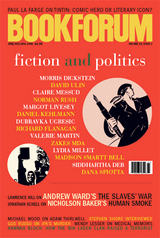
A word of advice: Do not allow Sharon Weinberger and Nathan Hodge to plan your vacation, unless touring missile silos in the middle of Wyoming is your idea of a good time. Better to go to the beach and bring along A Nuclear Family Vacation, their entertaining travelogue-cum–history of the American nuclear-weapons industry (and its analogues in central Asia and Iran). Better still, read their book at summer’s end; though frequently amusing, A Nuclear Family Vacation is likely to dampen one’s spirits, as discussions of nuclear war will often do.
Weinberger and Hodge, “two defense reporters wedded to our work (and each other),” traveled to a dozen places associated with nuclear weapons, including the marquee attractions of nuclear tourism—among them Los Alamos, New Mexico, and the formerly “secret city” of Oak Ridge, Tennessee—as well as more covert and (literally) underground sites, like the Cheyenne Mountain command-and-control complex in Colorado. What emerges is a journey at once very serious and rather absurd. Their description of a bomb shelter hidden beneath a West Virginia resort, originally designed to house a postcataclysm Congress, is straight out of Dr. Strangelove. (In the event of nuclear war, members of Congress would have luxuriated on thin metal cots, in a facility that boasted its own television studio and crematorium.) Borat’s spirit presides over their trip to a former Soviet test site in Kazakhstan, especially when the caretaker of a local medical museum that features fallout deformities and birth defects proudly informs them: “It’s the only Cyclops baby in any museum.”
Not surprisingly, Weinberger and Hodge encounter cultures of secrecy bordering on paranoia. Lack of access and security clearance is the bane of any dedicated nuclear tourist, and, frustratingly, the pair are sometimes forced to describe only tangential details about a place (such as the dusty road and the antiaircraft guns that lead up to the uranium-enrichment facility in Natanz, Iran, and the concrete pillbox and chain-link fences protecting the mysterious Site R in rural Pennsylvania).
Though the authors are not entirely blind to the grit and bother of travel, their book isn’t about such vagaries (food is rarely mentioned, toilet paper just once). Underlying their journey into our nuclear past is an earnest and thoughtful discussion of our nuclear present—and future. Deterrence and mutually assured destruction, the pillars of American and Soviet policy during the cold war, come in for questioning. So, too, do plans for missile-defense shields and an initiative to build a “Reliable Replacement Warhead,” which they suggest amounts to a reinvigoration of the nuclear-weapons industry. They identify a troubling lack of a cohesive national nuclear policy and remark that “much of the infrastructure supporting nuclear weapons continues to exist merely because no one has come up with a compelling reason to shut it down.”
One can imagine an updated version of A Nuclear Family Vacation in which the two visit sites in Pakistan, India, China, North Korea, Israel, Russia, France, Great Britain, and heaven knows where else. The itinerary is not as finite as one would like; in fact, it seems to be growing. But there would be some comfort in having these sober and subtle observers as our guides.
